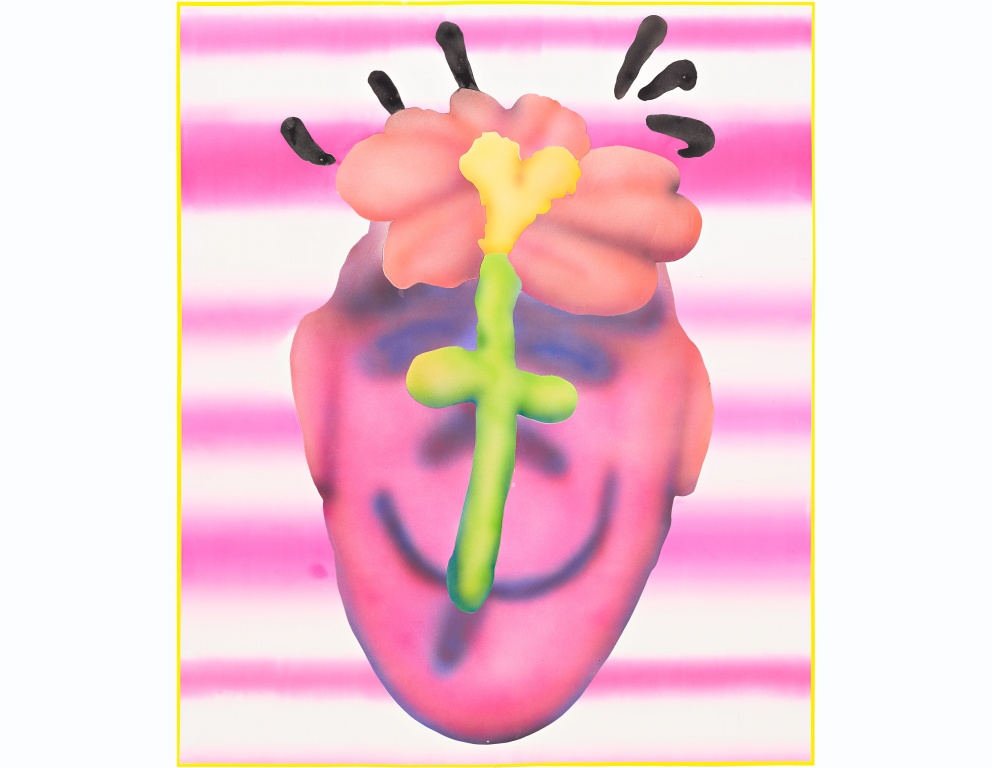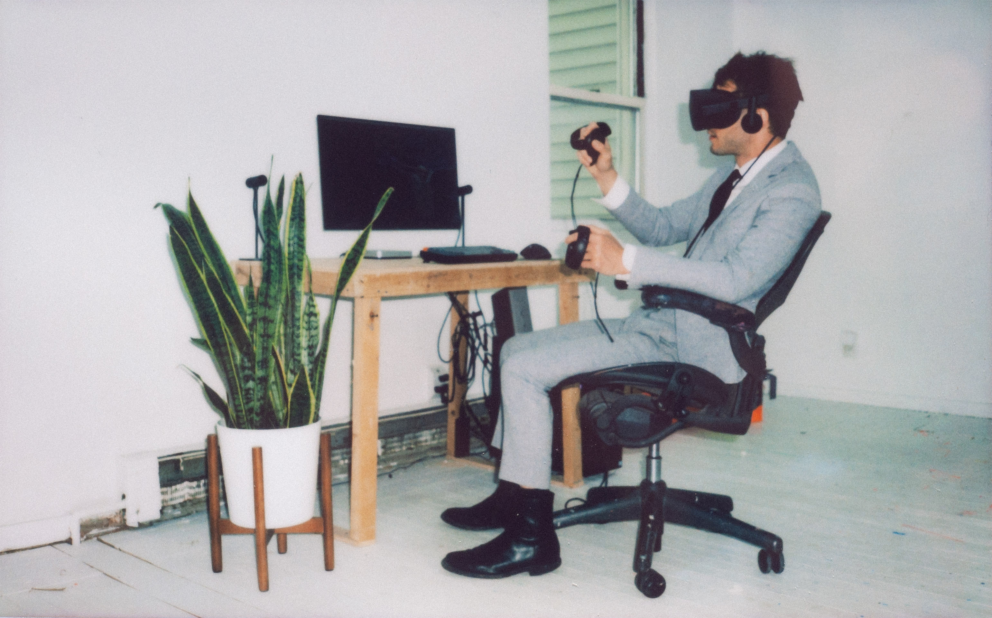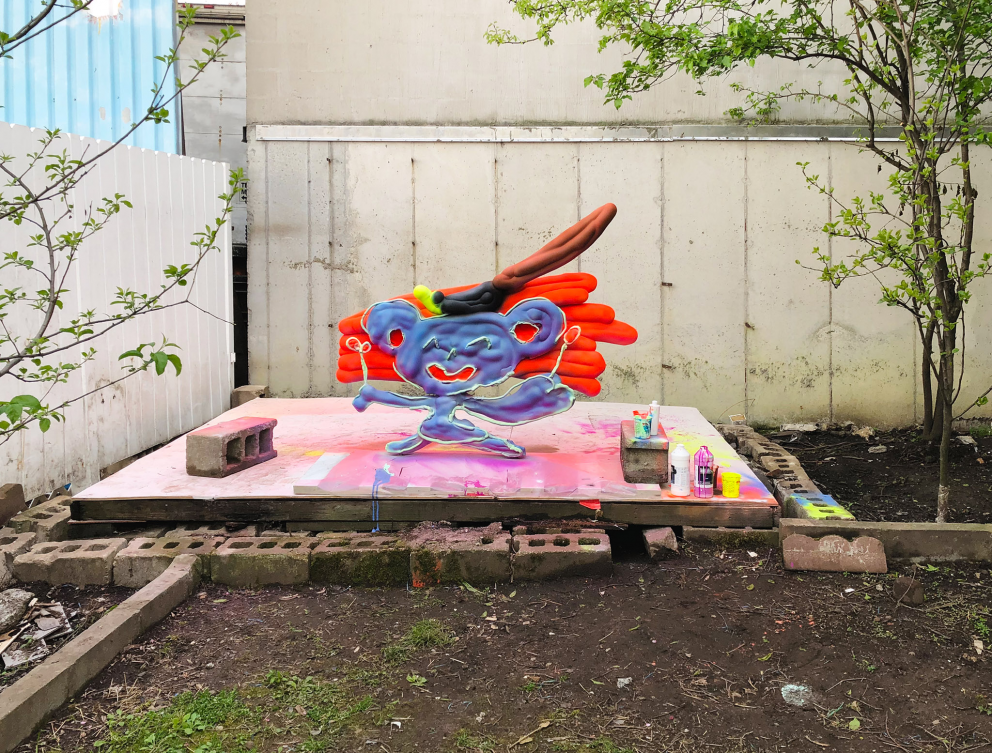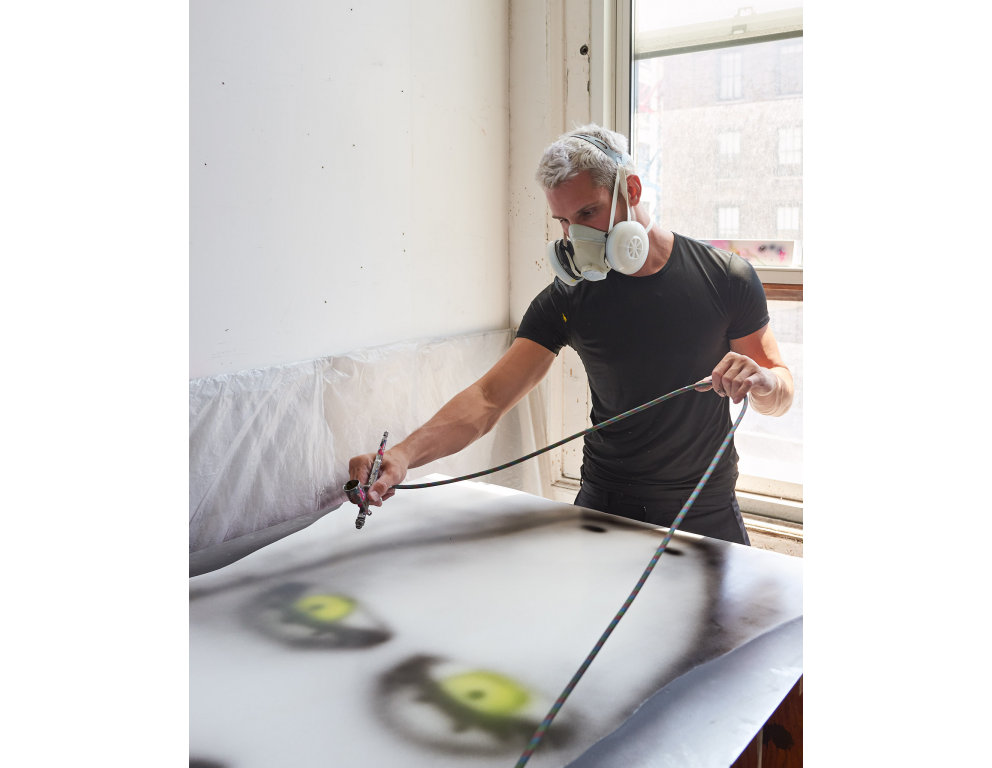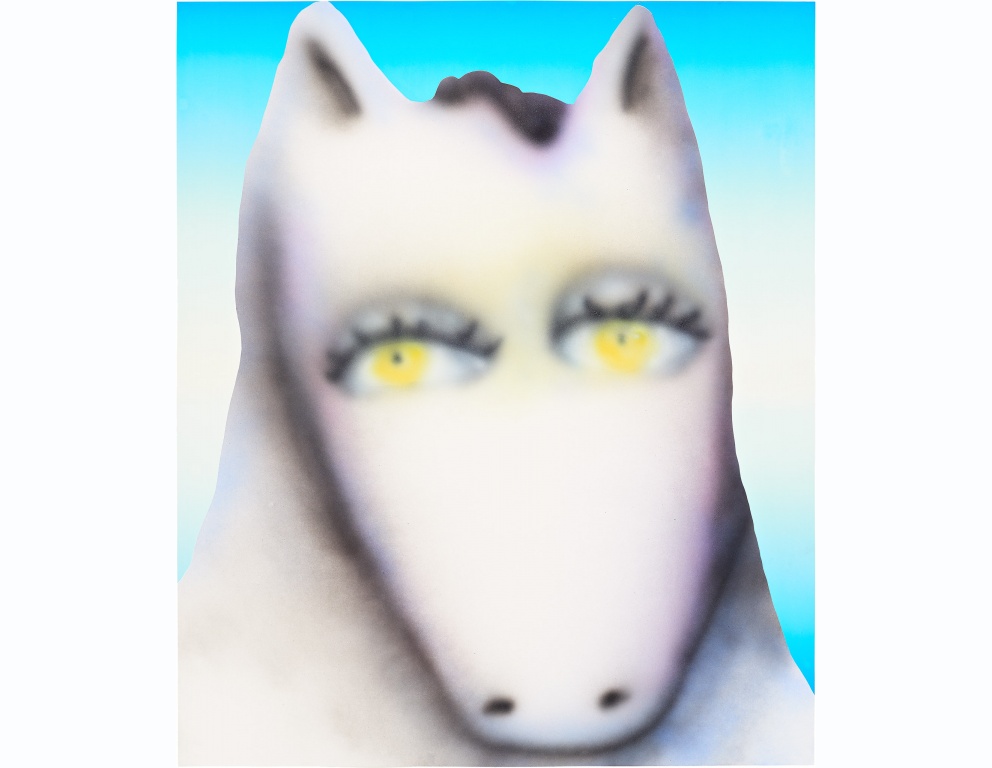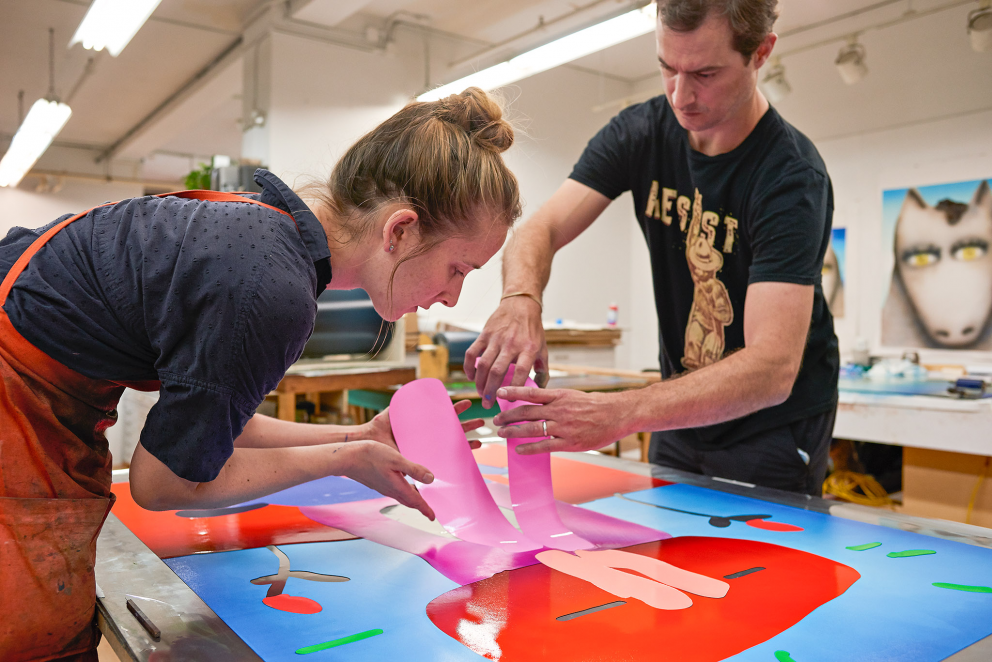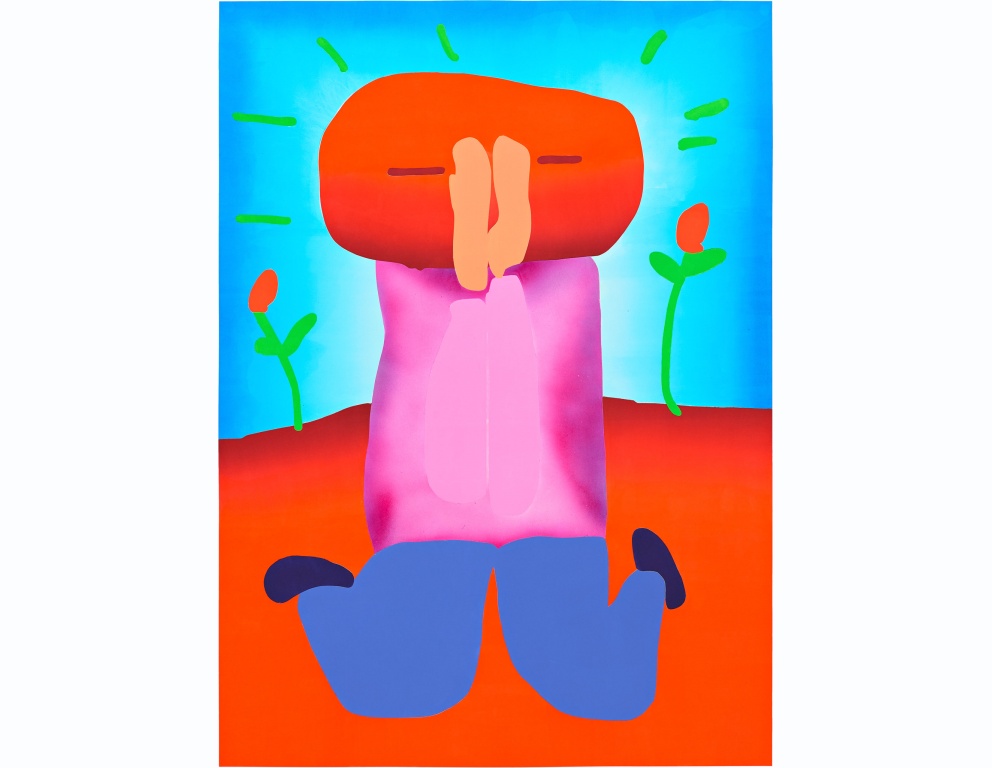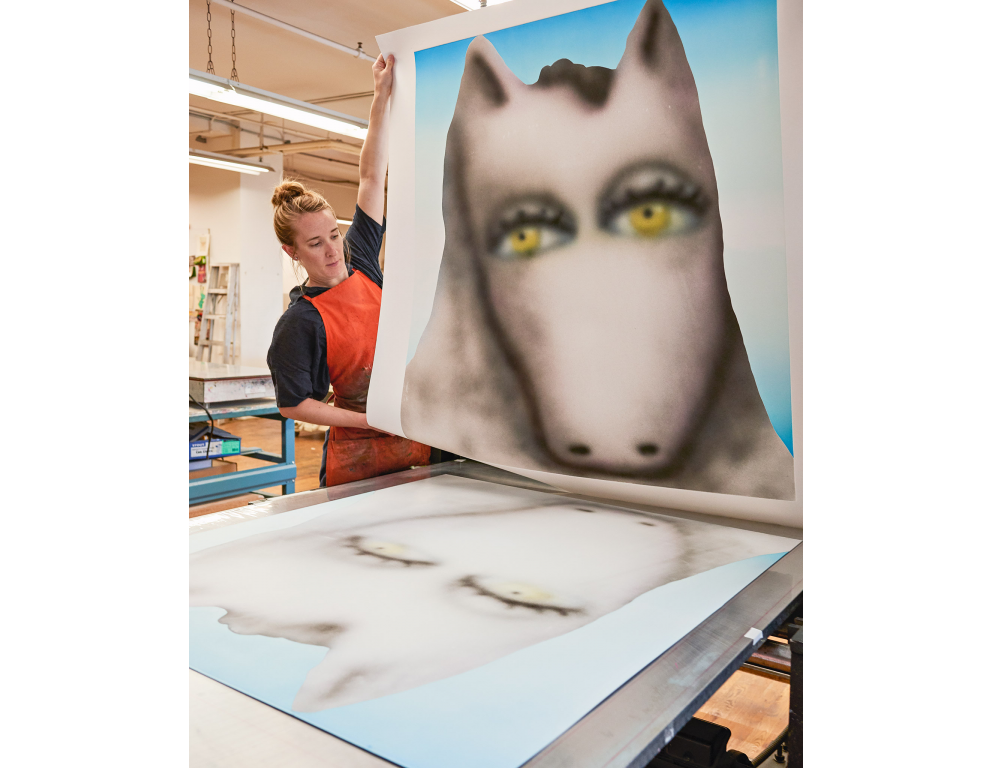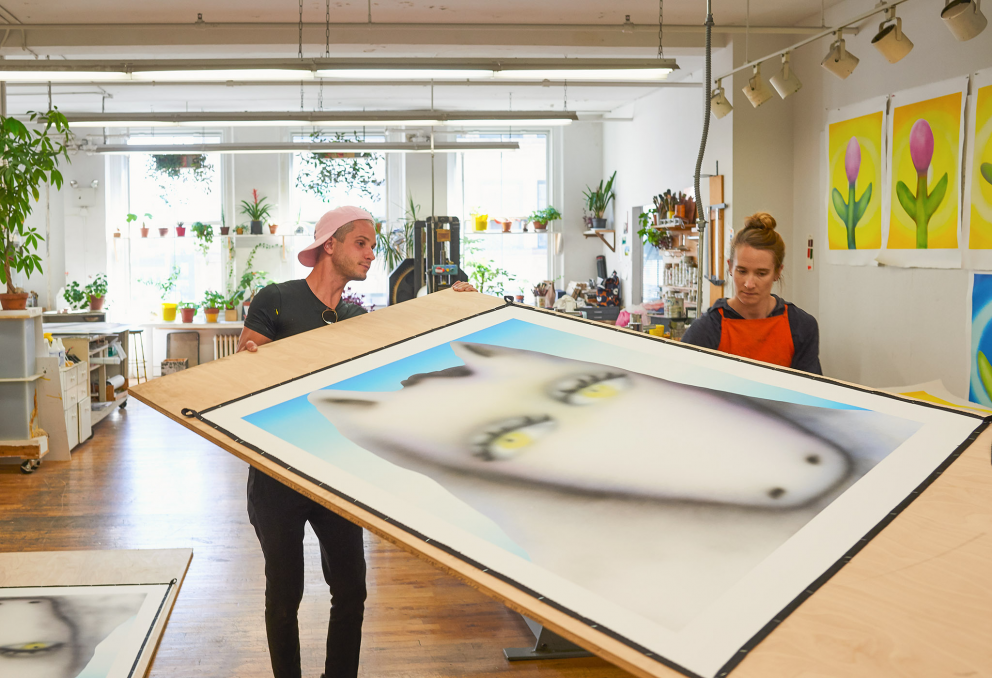-
Austin Lee’s works are born out of layered paradoxes: sinister and playful, whimsical and meticulous, grounded in tactility while inhabiting a purely illusory space. He has inverted the notion of life drawing; beginning with the imaginary and modeling an image through a series of material states before it finds its final physical form. The transformative scale of his works and his skill in rendering surface and volume impart monumental weight to his flights of fancy.
Lee’s palette and line derive their qualities from digital drawing, referencing the 8-bit, 256-color gamut and the clumsy brush strokes of early consumer graphics programs such as Microsoft Paint. Using 3-D modeling software, he begins his drawing process by bringing these primary forms into their own fully rendered, albeit absurd, dimensionality. He realizes in meticulous detail the ambition of a child's drawing: to paint a fantasy world into existence.
-
"Flower Face" (2019)
-
After creating initial compositions in Photoshop for many years, Austin Lee has recently switched to an entirely new way of drawing, using the Virtual Reality program Oculus Rift.
Donning the Oculus headset, Lee labors in a purely virtual space—a “blue void” that “feels infinite,” he says. “I can draw in space, very gestural. You just press a button and it’s almost like extruding paint tubes.” The process isn’t always easy. “I’ll sit and use [the Oculus] four or five hours at a time,” he explains. “I’ll take it off and feel crazy. I really like it—but it does make me nauseous.”1
-
What the artist sees with Oculus Rift.
-
"Brush Bear" (2019)
In the Pace Editions studio, Lee uses his virtual drawings as the source material for his unique prints. In some cases, Lee initiates his ideas from existing works of art, or patterns found in the world. Brush Bear is inspired by a drawing his nephew made when he was around 5 or 6 years old. His nephew’s drawing transitioned to a digital drawing in Oculus Rift, then to a painting, and now a monoprint, which has both a graphic hard edge and a soft airbrush quality. The artist is currently creating this work as a sculpture. In translating images, Lee finds that something new comes to life in each iteration.
-
Austin Lee employs his signature airbrushing technique, in combination with the more traditional printmaking techniques of aquatint, relief, stenciling and rainbow roll. Lee is simultaneously exploring the themes of the horse, flowers, figures and Brush Bear in the printshop and his studio.
-
From the beginning, Austin talked about the “hard edge”/graphic quality that came more naturally in print making. He mentioned that the hard edge was more difficult to achieve in his painting practice. There always seems to be this nugget of challenge artists bring into the printshop. Austin wanted to create images that he couldn’t create with painting. He eventually adjusted his drawing practice, having in mind how it might translate to print, essentially saying “this image is better suited for printmaking then painting.”
-Master Printmaker Justin Israels
-
"Flower Field Pink" (2019)
I started making the flower paintings after visiting Istanbul. I really fell in love with the beautiful patterns in the architecture there. I was curious if I could make paintings that could be interesting without the figure and I started making flower paintings when I returned. They ended up still feeling like people.
-
There was a lot of brainstorming with Austin to divide the elements of each print into their respective techniques - what he would airbrush, what we would print relief and fade roll, etc. Lots of trial and error also to see which of our inks would reverberate on paper the same way colors in pixels reverberate on a screen. It was a challenge to adapt our materials to get that glow.
-Master Printer Sarah Carpenter
-
Since I make the sketches on a computer first, I will often project them on the wall to get a sense of what the best scale for the work would be. I like making the digital drawings large because I'm basically translating these quick digital gestures, a flick of my wrist, into shapes that are body sized. I like the big paintings and prints to feel effortless even though a lot of effort is put into making them look simple.
-
"Horse in Colors" (2019)
-
Footnotes
1. I can draw in space, very gestural... "Austin Lee’s Feel-Good Art Is More Complicated Than It Seems,” Scott Indrisek. Garage Magazine. March 13, 2019
All works of art © Austin Lee
VR Painting Video © Austin Lee
